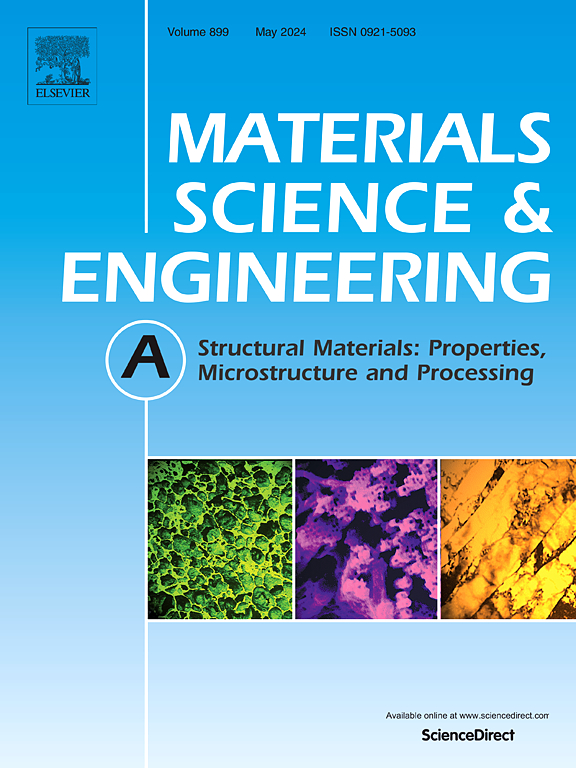在室温和650℃塑性应变控制下,揭示718Plus合金在LCF循环硬化和软化过程中粒径分布的作用
IF 7
2区 材料科学
Q1 MATERIALS SCIENCE, MULTIDISCIPLINARY
引用次数: 0
摘要
研究了718Plus合金在室温和650℃完全反向低周疲劳条件下的单峰态(USTD)和双峰态(BSD) γ′分布对循环变形机制的影响。USTD试样表现为短暂的初始硬化,然后是广泛但逐渐的循环软化,而BSD试样表现为长期硬化,然后是短暂而陡峭的软化响应。这种对比的应力响应行为已经在位错-析出相互作用机制的基础上得到了解释,通过在两个温度下以0.15%的塑性应变幅变形到25次的间断LCF试样。USTD试样的扩展软化是由于弱耦合位错剪切导致的,该剪切需要较低的剪切应力,从而导致单峰相更快的破碎和溶解,产生无γ′带。然而,强耦合位错剪切双峰分布需要较高的CRSS,从而导致延迟软化。尽管整体软化程度降低,但循环软化速率(每循环)随塑性应变幅值和温度的变化而增加。本文章由计算机程序翻译,如有差异,请以英文原文为准。

Unraveling the role of particle size distribution in the cyclic hardening and softening mechanisms of alloy 718Plus during LCF at room temperature and 650 °C under plastic strain control
The effect of particle size distribution on the cyclic deformation mechanisms in alloy 718Plus has been examined in the unimodal (USTD) and the bimodal (BSD) γʹ distributions under fully reversed low cycle fatigue at room temperature (RT) and 650 °C. The USTD specimens depicted a short initial hardening followed by an extensive but gradual cyclic softening, while the BSD specimens manifested prolonged hardening followed by a brief yet steep softening response. This contrasting stress response behavior has been explained on the basis of the dislocation–precipitate interaction mechanisms through interrupted LCF specimens, deformed till 25 cycles at 0.15 % plastic strain amplitude at both temperatures. The extended softening in USTD specimens occurred due to the weakly coupled dislocation shearing, which required lower shear stress, leading to faster fragmentation and dissolution of the unimodal precipitates, generating γ′-free bands. However, a higher CRSS was needed for the strongly coupled dislocations to shear the bimodal distribution, resulting in delayed softening. Although the extent of overall softening was reduced, the cyclic softening rate (per cycle) increased as a function of the plastic strain amplitude and temperature for both USTD and BSD specimens.
求助全文
通过发布文献求助,成功后即可免费获取论文全文。
去求助
来源期刊

Materials Science and Engineering: A
工程技术-材料科学:综合
CiteScore
11.50
自引率
15.60%
发文量
1811
审稿时长
31 days
期刊介绍:
Materials Science and Engineering A provides an international medium for the publication of theoretical and experimental studies related to the load-bearing capacity of materials as influenced by their basic properties, processing history, microstructure and operating environment. Appropriate submissions to Materials Science and Engineering A should include scientific and/or engineering factors which affect the microstructure - strength relationships of materials and report the changes to mechanical behavior.
 求助内容:
求助内容: 应助结果提醒方式:
应助结果提醒方式:


